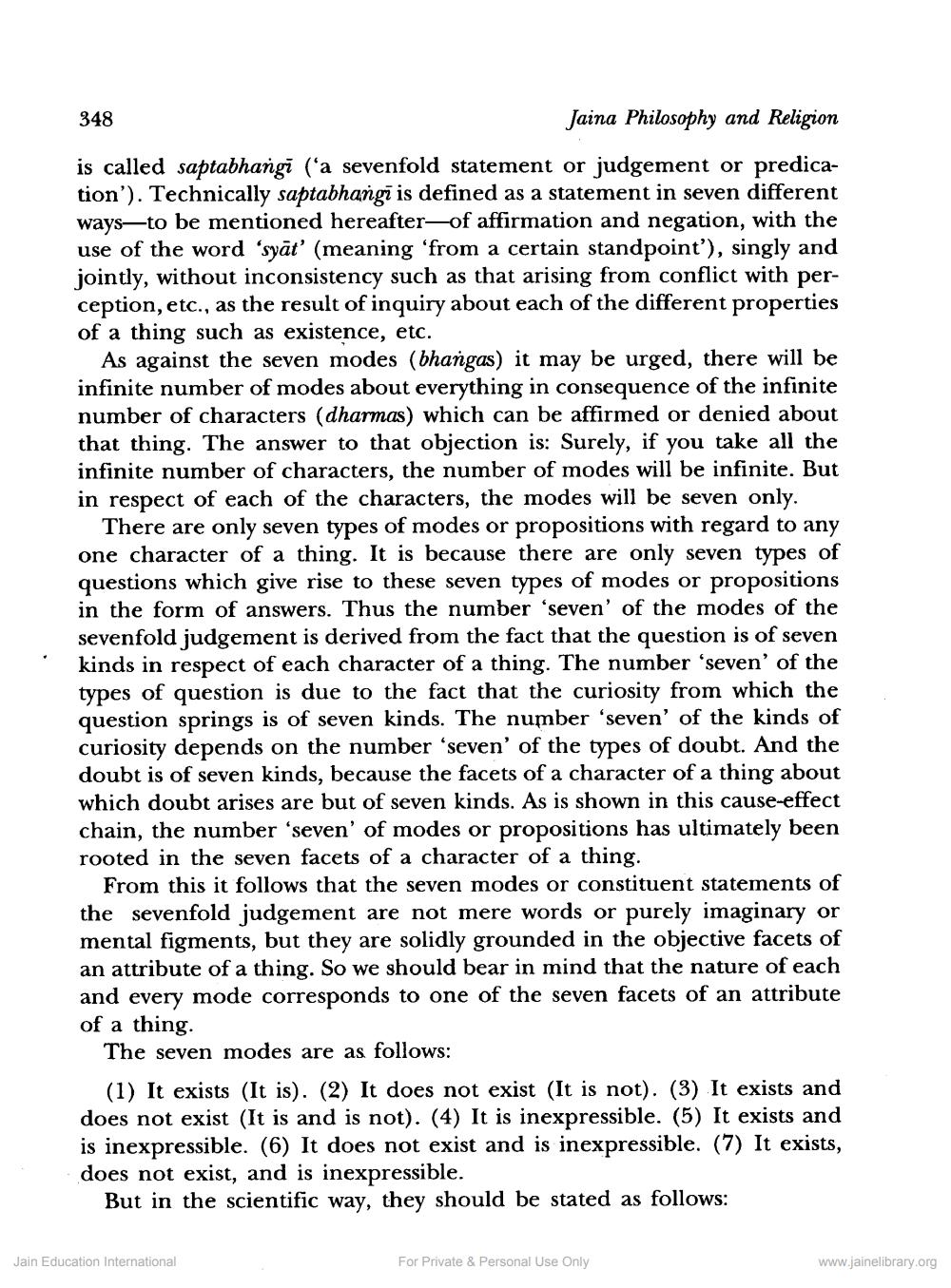________________
348
Jaina Philosophy and Religion
is called saptabhangi ('a sevenfold statement or judgement or predication'). Technically saptabhangī is defined as a statement in seven different ways—to be mentioned hereafter- of affirmation and negation, with the use of the word 'syāt' (meaning 'from a certain standpoint'), singly and jointly, without inconsistency such as that arising from conflict with perception, etc., as the result of inquiry about each of the different properties of a thing such as existence, etc.
As against the seven modes (bhangas) it may be urged, there will be infinite number of modes about everything in consequence of the infinite number of characters (dharmas) which can be affirmed or denied about that thing. The answer to that objection is: Surely, if you take all the infinite number of characters, the number of modes will be infinite. But in respect of each of the characters, the modes will be seven only.
There are only seven types of modes or propositions with regard to any one character of a thing. It is because there are only seven types of questions which give rise to these seven types of modes or propositions in the form of answers. Thus the number 'seven' of the modes of the sevenfold judgement is derived from the fact that the question is of seven kinds in respect of each character of a thing. The number 'seven' of the types of question is due to the fact that the curiosity from which the question springs is of seven kinds. The number 'seven' of the kinds of curiosity depends on the number 'seven' of the types of doubt. And the doubt is of seven kinds, because the facets of a character of a thing about which doubt arises are but of seven kinds. As is shown in this cause-effect chain, the number 'seven' of modes or propositions has ultimately been rooted in the seven facets of a character of a thing.
From this it follows that the seven modes or constituent statements of the sevenfold judgement are not mere words or purely imaginary or mental figments, but they are solidly grounded in the objective facets of an attribute of a thing. So we should bear in mind that the nature of each and every mode corresponds to one of the seven facets of an attribute of a thing.
The seven modes are as follows:
(1) It exists (It is). (2) It does not exist (It is not). (3) It exists and does not exist (It is and is not). (4) It is inexpressible. (5) It exists and is inexpressible. (6) It does not exist and is inexpressible. (7) It exists, does not exist, and is inexpressible.
But in the scientific way, they should be stated as follows:
Jain Education International
For Private & Personal Use Only
www.jainelibrary.org




